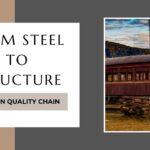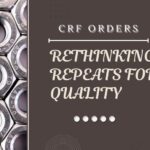A wagon doesn’t fail because of one bad part. It struggles when too many variables stack up in ways no one planned for. That usually starts with raw steel.
Inputs that behave the same across batches help every team, from forming and welding to fitting and final inspection. But when coil quality shifts, everything else starts to follow. Sometimes slowly, sometimes all at once.
Here’s where steel consistency makes the biggest difference.
Punching and Slotting Tolerances Hold When The Substrate Is Even
For cutouts, slots, and mounting holes, the substrate needs to respond evenly under pressure. That depends on coil thickness tolerance, edge hardness, and internal stresses being within a narrow band.
If one coil draws more or less under the same die, hole positions drift.
What looks like a clean punch in isolation ends up misaligned when assembled. Parts don’t center. Bolts bind. Fasteners jam during torque.
These slowdowns don’t always come from the fixture or the machine. They come from the sheet itself. And you can only fix that by tightening the coil supply window.
Forming Behavior Impacts Geometry Control
Steel that bends clean today should bend the same way tomorrow. That depends on grain structure, hardness, and yield strength staying stable across batches. If those shift, the forming process has to fight the material, leading to springback, stretching, or cracks at corners.
Most profiles used in wagons rely on repeatable shape. A 5mm offset at a flange might seem small at the press brake. But on the assembly line, that gap changes the way two parts meet. Workers force-fit parts, bolt holes shift, and weld seams need correction.
If the coil behaves predictably, geometry stays tight. And that keeps everything downstream running smoother.
Weld Consistency Rests on Surface and Material Behavior
In wagon builds, welding happens at nearly every stage. From the underframe to the brake beam, weld joints carry dynamic loads. A shift in surface finish or alloy response can change how the arc behaves.
Cleaner surfaces reduce prep time. More stable carbon and manganese content avoids porosity and burn-through.
Consistent coil behavior means welders don’t have to adjust machine settings every few joints.
And when weld quality holds, you reduce rework, avoid inspection flags, and improve fatigue resistance in high-stress areas.
Dimensional Accuracy Drives Fixture Fit and Downstream Flow
Large wagon parts sit in custom jigs or fixtures during sub-assembly. Those fixtures don’t account for variation in flatness, camber, or twist.
When incoming parts vary, fixture fit takes longer. Alignment steps creep into the schedule. The rhythm breaks.
Instead of moving from one station to the next, parts get pulled aside for heat correction, straightening, or shimming. Time stretches. Throughput drops. Small drifts in steel behavior cost hours, not because they’re dramatic, but because they interrupt the flow.
Coating and Finish Work Prefer Uniform Steel Conditions
Surface prep for paint or galvanizing starts before the steel even reaches that station. If one coil comes pickled and another scaled, or if the surface roughness varies across lengths, finish consistency suffers.
Coating lines run best when the surface behaves predictably. That affects adhesion, thickness control, and even color uniformity.
For wagon components that sit in harsh weather (like bogies, fall plates, or couplers), this directly affects corrosion resistance over time.
Consistency up front cuts down on touch-ups later.
Final Thoughts
Wagon assembly depends on rhythm. That momentum breaks when parts need fixing, sorting, or reworking due to inconsistent steel behavior.
Every delay starts small but grows fast, especially when teams rely on predictability to stay on schedule.
At our end, we pay close attention to coil selection, forming response, and profile consistency across batches. Our work helps downstream teams move faster with fewer surprises.
If you’re looking to reduce shop-floor delays and improve line flow, the right input steel is where that starts. Get in touch with us to learn more.





